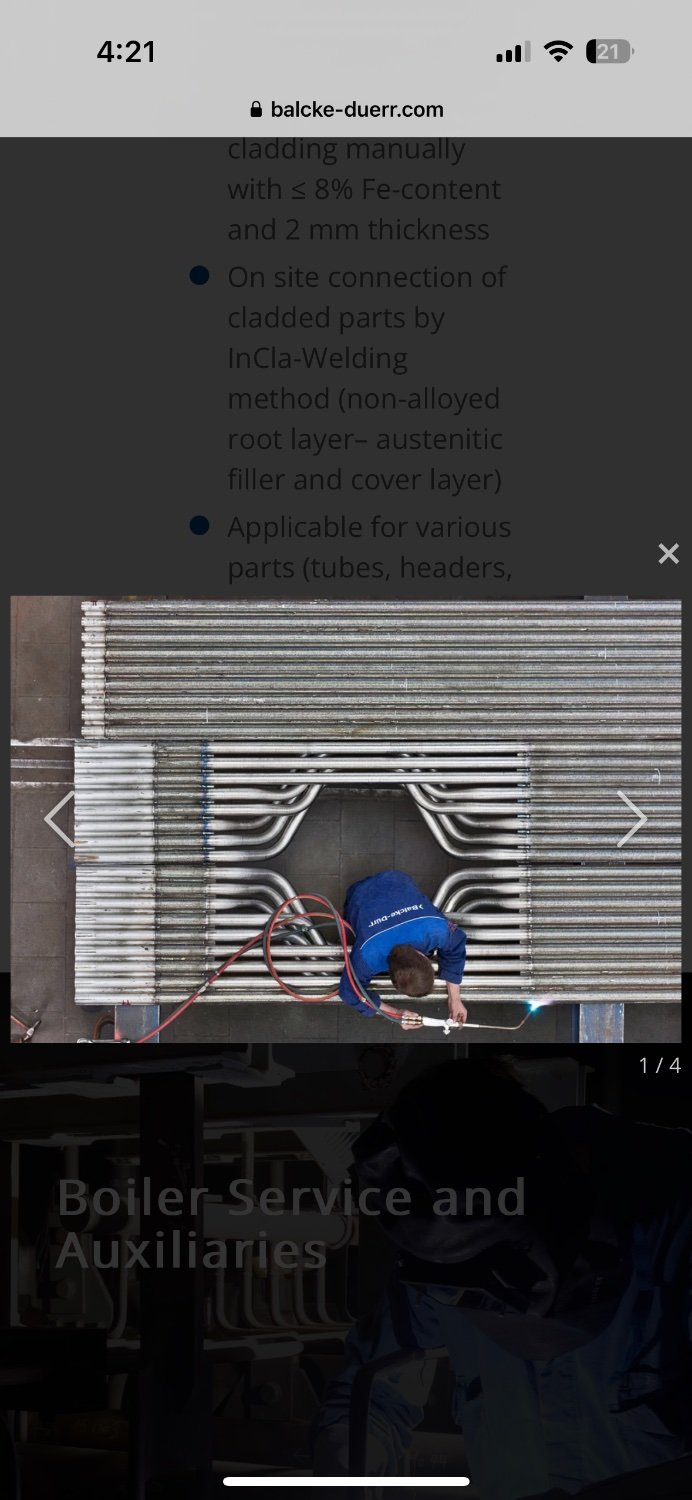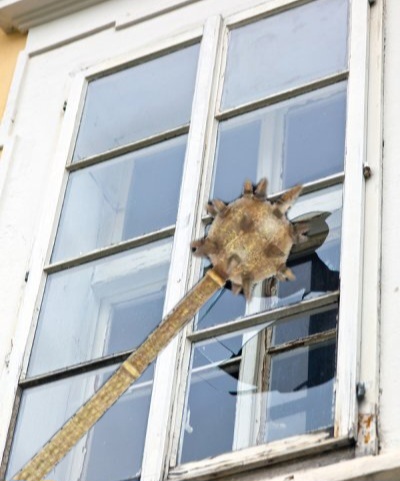Sorry for the bad quality.
My grandfather had this in his office. He worked as a computer engineer so I initally thought it was a zoomed-in picture of a computer chip or something, but maybe it is something large.
He’s not alive anymore so I can’t ask him. If somebody can help me out, that would be great.
I believe this is the inside of an industrial, water-tube boiler. Like where it is being manufactured. If you look in the upper left, you can see tubes to be welded in. It isn’t a perfect match, but those openings in the pipes look like where blowdown piping would go in. Source, I designed piping systems for these.
Edit: If you click on the small images on this page you can see a lot of piping that looks just like this: https://balcke-duerr.com/en/service-solutions/boiler-projects-services/
That said, it is really difficult to get a sense of scale here and this could be some much smaller heat transfer device that just uses the same design.
This picture really has the same hex hole pattern.

Looks like some sort of heat exchanger…
Not sure why people think this might be huge. You can clearly see solder spots in the lower right and standardized holes in the upper left that are probably small screw sized. I’d guess all those rods are standard computer pins, just really long. I think it looks like some sort of pre-breadboard breadboard project to me.
It looks to be about the size of a briefcase based on those screw holes. It would make sense for the picture to be taken by someone from above.
Totally agree about the solder spots on the right and the lower middle. I think this is some sort of IC or crude, early processor. These lines would feed in/out power and data and in the proceeding decades, have been shrunk down to be contained entirely inside the processor with nothing more than pins sticking out the bottom.
It looks to me like something big ontop of other big things.
Those “screw holes” in the top left look like crane hook points for moving the big things underneath.
There is a picture elsewhere on the post that shows similar divert-holes with a person standing through it.
And it looks like a pile of junk near the top of the photo.There are odd diverts on the left and right sides.
I bet they are ladder/access points, which would match the scale of a person standing through the hexagonal diverts, and would match the crane hook points.Regardless of scale, its certainly a heat exchanger and not anything IC or circuit related
That reminds me of the internals of the Apollo Guidance Computer. Not sure though.
The part nearest the top of the frame looks like it might be a heatsink.
Never mind what the picture is…why is it sitting on a large bed of ramen?
Can we not turn this community into a place where everyone comes to make some shitty joke?
No
Is there a midpoint between getting banned for making a joke and keeping things somewhat to the point? It does look like a bed of ramen. Now I want ramen…
Definitely the sort of picture that (when displayed upon your wall) gets you a ton of ass.
As others mentioned it looks like a heat sink, they create a lot of surface area and blow air through to the device in order to help dissapate heat and prevent the device from overheating.
Those are definitely pipes. It looks like a complex heat exchanger and given the size and the further array under it, I’d wager it’s a nuclear reactor assembly.
Could it be some kind of radiator or heat exchanger of a power plant?
https://www.indiamart.com/proddetail/compact-heat-exchanger-5364951488.htmlHR Giger designing computer maInboards…?
Looks like some sort of heat sink/exchange?
Don’t Dead Open, Inside
It’s a floor in The City, in Blame!
I wanted to test ChatGPTs info, so I provided this pic to it. This was the response:
Reworked reply that finished completely
Yes, the image helps greatly. However, I can only analyze the image and provide information based on my training data up to April 2023.
The object in the image appears to be a large, industrial piece of equipment, quite possibly a heat exchanger or part of a cooling system due to the numerous fins and pipes, which are typical of such devices. The fins increase the surface area available for heat transfer, which is a common design feature in heat exchangers used for cooling fluids by transferring heat to the air or another medium.
The structure does resemble a kind of symmetry, with what appears to be two identical sides, which supports the idea of redundancy in the design. The hexagonal openings could be for access, inspection, or could possibly be where the equipment interfaces with other machinery or pipework.
This equipment could be found in a variety of settings where large-scale cooling is necessary, such as power plants, chemical plants, or other industrial facilities. The specific design details may vary based on the particular requirements of the system it’s designed to serve.
Without more context or specific knowledge about the exact model or type, it’s challenging to provide more than an educated guess. If you need a precise identification, providing the image to a professional with expertise in industrial machinery or thermal management systems would be advisable.
First response with “error in stream”
Thank you for the image. Based on what I can see, this object does indeed resemble a heat exchanger or a part of a cooling system, potentially for an industrial or high-performance computing application. The finned tubes, bracing, and hexagonal openings suggest it’s designed for efficient thermal management. It looks like a passive heat exchanger, where the finned design increases the surface area to facilitate heat transfer from the hot fluid inside the tubes to the air passing over the fins.
These types of heat exchangers are often used in applications where cooling is critical and can be found in various mechanical and electrical systems, including power plants, automotive cooling systems, and HVAC systems in large buildings. If this is indeed sitting atop server racks, it could be part of a specialized cooling system designed to dissipate the significant amount of heat generated by high-density computing equipment.
Given the complexity and specific design, it could be a custom or proprietary piece of equipment. Identifying the exact use and origin would likely require more context or expertise in the specific field where such cooling systems are used.








